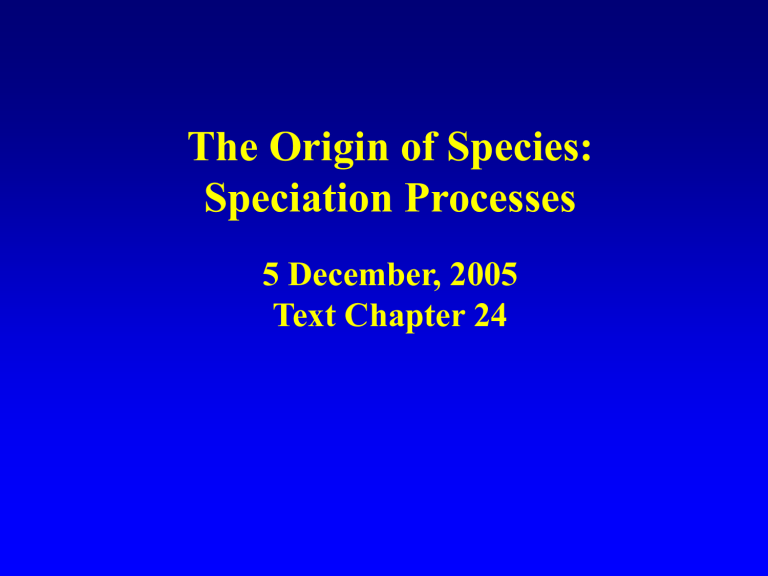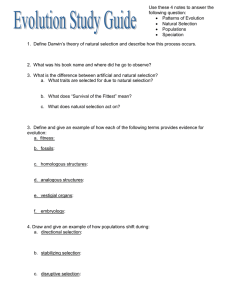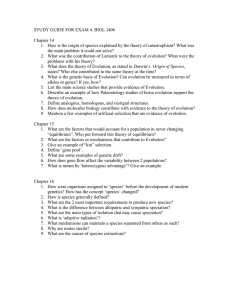The Origin of Species: Speciation Processes 5 December, 2005 Text Chapter 24

The Origin of Species:
Speciation Processes
5 December, 2005
Text Chapter 24
Allopatric speciation occurs when two populations of an ancestral species become geographically isolated.
Each population will then follow its own evolutionary course, in the absence of gene flow. Eventually, the two populations may become two species, unable to interbreed even if the geographical isolation is removed.
Sympatric speciation occurs when two populations diverge without geographic isolation.
Both of these modes of speciation can result in cladogenesis, or branching patterns of speciation.
Isolated populations that are small are more likely to diverge rapidly from the ancestral form. The founder effect in the small splinter population will lead to relatively large initial differences. Until the splinter population becomes large, these differences will be magnified by genetic drift. The more different the environment in which the splinter population finds itself, the more likely natural selection will drive additional divergence.
Adaptive radiation in island chains is an example of the results of repeated dispersal and isolation
Sympatric speciation in plants is often the result of polyploidy.
Speciation may be gradual or abrupt, but punctuated equilibrium may be more important gradualism in most radiations. Remember that even
“abrupt” events still require hundreds to thousands of generations.
Homeobox (Hox) genes control many of the steps in animal development.
Duplication and divergence of these gene clusters allowed vertebrates to evolve more complex developmental pathways.
Patterns of speciation may be complex.
Biology, Psychobiology, Biochemistry majors: Keep your text and portfolio, they will be useful in other biology classes!







